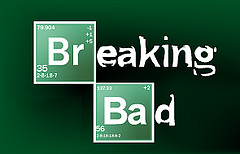
In May, we cross-posted a special edition of Office Hours from the all new Contexts Podcast. In this interview, Jessica Streeter speaks with Henry H. Brownstein and Timothy M. Mulcahy, co-authors of the Winter 2012 Contexts feature, Home Cooking: Marketing Meth.
This podcast or feature article (check if your university library has access to Contexts) would work well on its own in any criminal justice or deviance course. But what really struck me while listening to this podcast is how similar their findings are to the show Breaking Bad.

For those not familiar with the show, Breaking Bad tells the story of a square high school chemistry teacher who, when diagnosed with lung cancer, turns to a life of crime and begins to cook and sell meth to ensure his family’s financial security after he dies.
The authors of Home Cooking: Marketing Meth set up an interesting sociological question of why meth markets are so different from other drug markets. You could show an episode of the Breaking Bad in class and have a discussion about the social worlds of meth users and sellers compared to other drug markets. Or have students watch it at home and do their own analysis for a course paper.
For a comparison, check out “The wire goes to college” from the Summer 2011 issue of Contexts, an exchange between graduate students on the Contexts board and four scholars about the HBO crime drama The Wire, which examined Baltimore’s drug trade.
Also check out Maria Kefalas‘ book review of the New York Times bestseller Methland: The Death and Life of an American Small Town, entitled “from the music man to methland.“

Comments 1
Letta Page — July 4, 2012
I think Maria's piece is particularly evocative, bringing together her own research and that in the book she's reviewing for a succinct look at meth and its influence in small-town America. I'd love to hear what students have to say about their own experiences with (or regarding) the drug in their communities. I know I'd never heard of it maybe 5 years ago, and now it seems like it's an enormous, omnipresent problem.